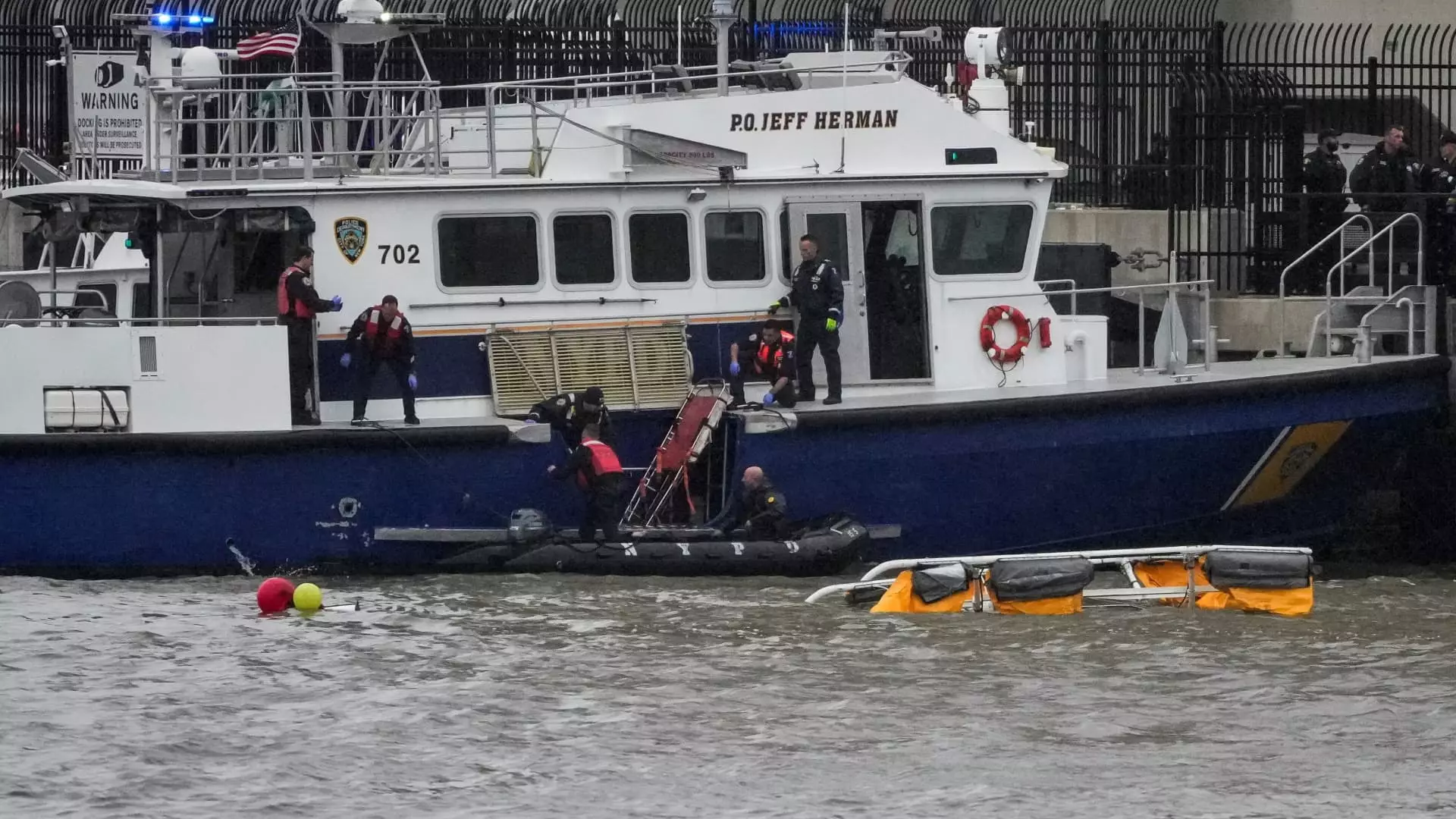In a tragic turn of events, a helicopter plunged into the waters of the Hudson River, claiming the lives of at least five individuals aboard, as reported by local news outlets. The incident, witnessed by numerous onlookers, has stirred a mix of shock and grief among New Yorkers. Videos circulating on social media depict the helicopter submerged upside down, a haunting image that encapsulates the suddenness of the calamity. The sheer unpredictability of such disasters raises essential questions about aviation safety and regulations that govern helicopter flights over densely populated urban areas.
The Eyewitness Account: A Shocking Moment
An eyewitness recounted a harrowing scene, claiming to have seen the helicopter lose a propeller while spiraling downward. This detail transforms a mere accident report into a vivid narrative of panic and despair. Witness accounts are crucial in piecing together what led to this catastrophe. The immediate reaction of citizens, many likely familiar with the frequent helicopter routes taken by sightseeing tours, highlights the fragility of safety in an environment dominated by urban air travel. Would new safety measures prevent similar disasters in the future?
The Helicopter: Insights from Flight Data
The helicopter involved in this incident was identified as a Bell 206L-4 LongRanger, a model often used for both private transport and scenic flights. Flight data indicates that the helicopter had recently taken off from the Downtown Manhattan Heliport, often a bustling hub for aerial tours. Users of the popular tracking platform, FlightRadar24, noted that this aircraft had been engaged in several flights in the preceding days, suggesting regular operational use. Although no definitive purpose was established for the ill-fated flight, the routine nature of its journeys raises apprehensions about potential safety oversights that could exist in the industry.
Authorities Respond: A Call for Vigilance
In the aftermath of this disaster, local authorities, including the New York Police Department (NYPD) and the National Transportation Safety Board (NTSB), have mobilized their efforts to comprehend the full scope of the situation. The NTSB has initiated its investigation, emphasizing the need for comprehensive analysis to determine the factors that contribute to such tragedies. While there are promises of thorough scrutiny and accountability, the pressing question remains: are these measures sufficient to instill confidence among the public that their safety is a priority?
Public Sentiment: A City in Mourning
The reverberations of this tragedy extend beyond mere headlines; they penetrate the collective psyche of New Yorkers and raise alarms regarding urban air travel. For a city accustomed to the sounds of helicopters soaring overhead, this incident signals a necessary reflection on travel norms and safety. As the community grapples with this loss, it offers an opportunity for discussions about the future of helicopter tours and the protocols that ensure passenger safety. The coexistence of entertainment and safety is a delicate balance, and events like this serve as stark reminders of what is at stake.


Napsat komentář